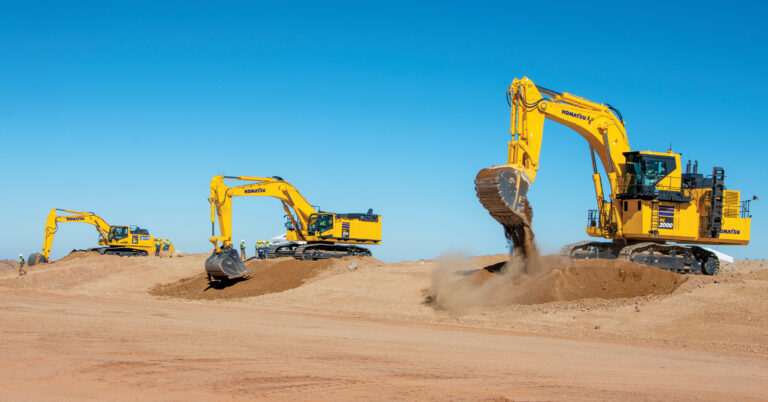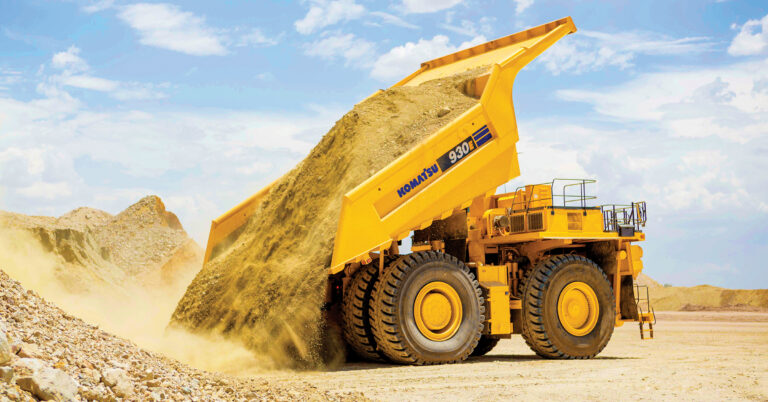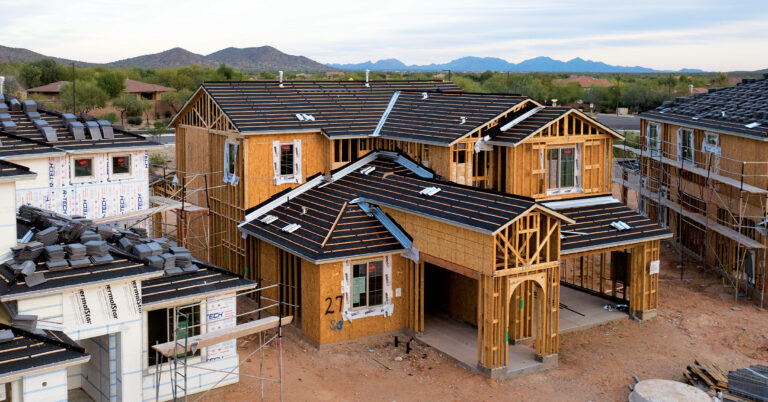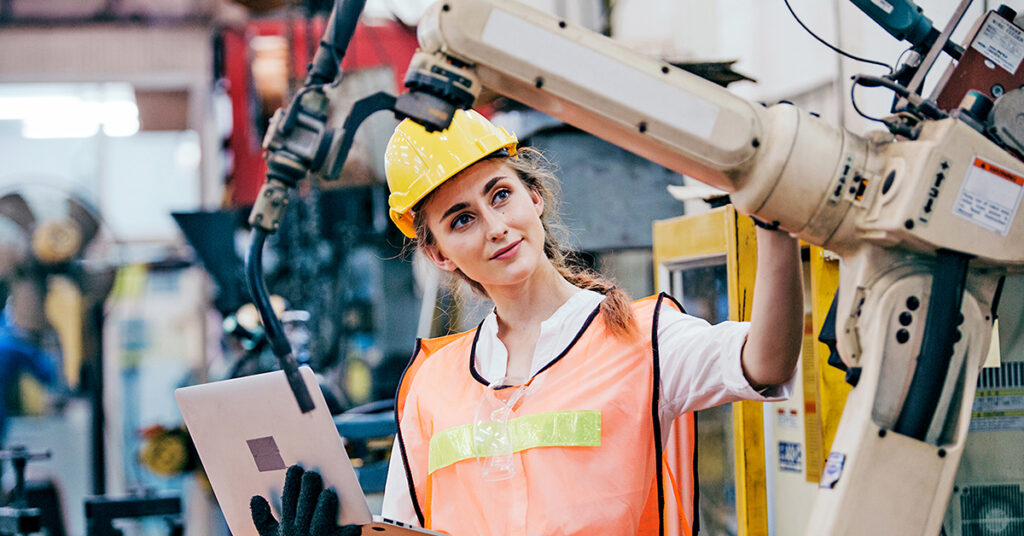
Automation gaining with human, robotic collaboration
The top reasons robots are suited for construction work, and what’s holding them back
Could robots, smart systems and automated processes someday soon control the full operation of a construction site? Would it make the job of a project manager easier or harder in the short term? Long term?
Numerically, there are some clear wins for productivity when you leverage the repeatability of a robotic element to get work done, versus the variability of human work. For example, using a conveyor belt, robotic arm and concrete pump, Construction Robotics’ SAM100 (Semi-Automated Mason) can lay 3,000 bricks per day as it works alongside a mason. A human bricklayer typically averages around 500. So, does that mean a crew of SAMs can or even should replace a human crew? Not any time soon, according to one expert.
“We don’t see construction sites being fully automated for decades, if not centuries,” Zachary Podkaminer of Construction Robotics, the New York-based company that developed SAM, told Digital Trends in 2017. “This is about collaboration between human workers and machines. What SAM does is pick up the bricks, put mortar on them, and puts it on the wall. It still requires a mason to work alongside it. SAM’s just there to do the heavy lifting.”
Robotics use in construction continues to make headway, though, as technology rapidly advances, and the need for new solutions to worker shortages remains strong. In limited instances, automated or semi-automated devices are already working alongside humans.

Nils Napp, an assistant professor at Cornell University’s School of Electrical and Computer Engineering, and his students are studying robotics for building and other applications. He said these examples of “cobots” — robots that are built to work alongside humans — are good at what they do, but they have limitations.
“Right now, SAM and others like that are useful at one thing,” Napp pointed out. “Programming them to move on to a completely different function is a challenge that will have to be overcome. There is a lot of really cool theory on robot construction, such as using a large swarm of termite-inspired bots that work together to build a structure. In practice, application is difficult because the assumptions you need to make in order to develop the theories end up being really hard to map on physical robots.”
That may change as technology advances, according to Will Knight in Wired. The article talks about a robot drywaller built by Canvas that scans unfinished walls using lidar (light detection and ranging) or what’s sometimes referred to as “laser scanning” and applies joint compound.
“It has long been impractical to deploy robots at construction sites because the environment is so varied, complex and changing,” wrote Knight. “In the past few years, however, advances including low-cost laser sensors, cheaper robotic arms and grippers, and open-source software for navigation and computer vision have made it possible to automate and analyze more construction.”
Increasing automation, analysis
Drones are also gaining prominence. Construction businesses are using them for tasks such as surveying, building models, tracking progress, recording data, billing, measuring stockpiles and more. Drone usage in the construction industry has grown about 239%, according to a recent estimate.
Increased safety is another benefit of drone technology. Inspections in hazardous
and/or remote areas can be done without putting personnel in harm’s way.
“Simply put, drones enable us to provide needed views that are inaccessible, or otherwise too risky and expensive to capture by any other means,” said Ryan Holmes, program manager of unmanned aircraft systems (UAS) for Multivista, in the ForConstructionPros.com article “Six Factors to Consider When Adding Drones to Your Construction Business.” “We are using drones to help anywhere, from assessing land clearing and earthwork, insurance coverage, inspections, through to project completion and maintenance thereafter.”
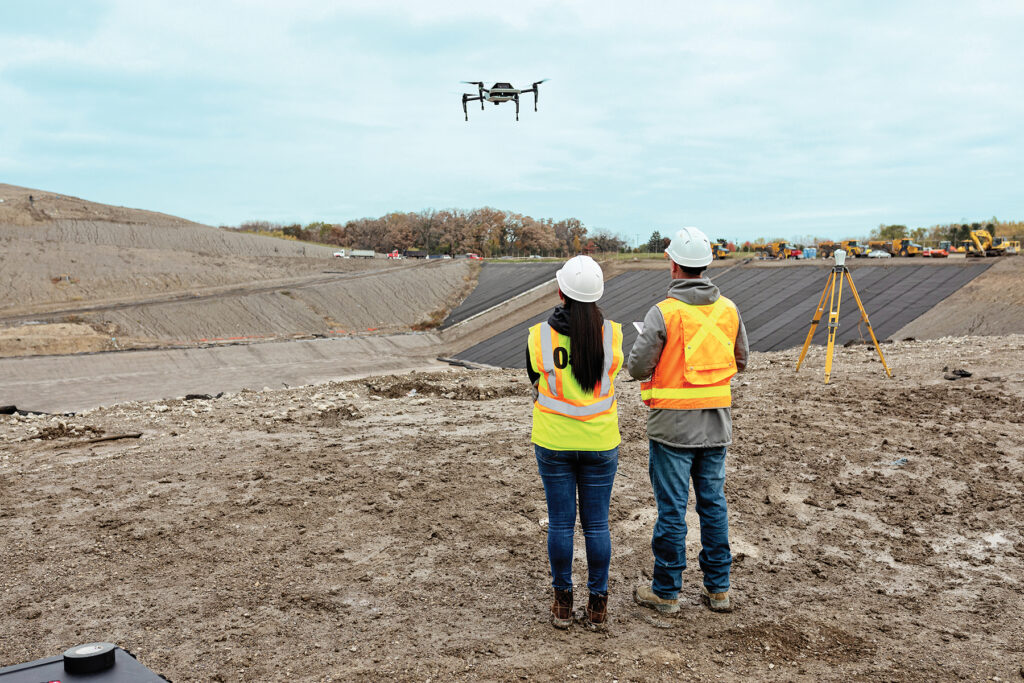
Proven and emerging technology
After site work has been done to prepare building pads and parking lots, robotics can come into play in building construction itself with 3D printing that allows machinery to be programmed to create practically any shape. A 3D-printed, two-story house recently won the German Design Council’s German Innovation Award for its social, ecological and
economical sustainability.
The house was printed with a mortar specifically designed for 3D printing by HeidelbergCement. “The printing of the residential house in Beckum is a milestone for 3D concrete-printing technology,” said Dr. Jennifer Sheydt, head of engineering and innovation for HeidelbergCement. “We are convinced that this new type of construction will become an established standard in the years to come.”
How many years down the road will depend on several factors, according to Napp. Among them are trust, acceptance and an open mindset to different building materials, such as double-insulated stacking blocks that he believes would optimize automation.
“Autonomous machines and GPS earthmoving are proven to work,” Napp said. “A 3D-printed structure is also proven. An entire structure built by robots is different because you have to trust that the robots are correctly joining plumbing pipe and connectors so that they don’t leak, for instance. We have that with humans. For now, the questions are there, such as would they meet code, can you even get a permit, are they fire and earthquake tested? If those, and others, can be overcome, then I believe there will be faster movement toward acceptance and someday having fully or near-fully robotic construction sites.”

